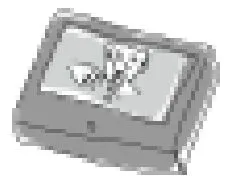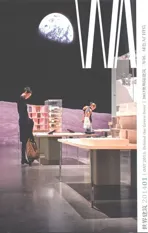废物
2014-02-22
废物
Waste
可持续性要求资源得到有效利用。要不惜一切代价避免人类输出的非生产性部分——废物。
同时,废物的产生比以往任何时候都要多,不管我们走到哪里,总在我们身边。为了应对这种永久性的失败,需要有一种新的行业术语。可回收物是新的废物。
Sustainability demands that resources are used efficiently. Waste, the unproductive part of human output, is to be avoided at all costs.
Meanwhile, more than ever before, everywhere we go and all around us, waste is being produced. To cope with this permanent failure a new jargon was needed. Recyclables are the new waste.

可以肯定地说,如今,回收已是我们许多人日常生活的一部分。这个概念已成为主流,在儿童玩具中看到它是再正常不过的一件事。
It is safe to say that for many of us, recycling is now part of our everyday life. The concept is so mainstream that it seems quite normal to see it appear in toys for children.

显然,很多奇怪的废物可能与水泥和胶水混合,制成建筑物的材料。
Apparently, lots of weird waste products can be mixed with cement and glues to make buildings materials.

但是,在所有这些“再生”材料身上发生了什么?有时似乎回收更多的是关于废物管理而不是节约资源。
But what happens to all of these "recycled" materials? It sometimes seems as is recycling is more about waste-management than resource conservation.

废物可以完全避免吗?一个致力于避免产生废物的家庭:这是一种歇斯底里式的集合,还是社会理想的一种表现?
Can waste be altogether avoided? A family dedicated to avoiding waste: is it a collective hysteria, or a manifestation of a societal ideal?

但当这些混合材料自己变成废物时,会发生什么事情?在这样的分拣线上,这些混合物永远无法分开。2002年,《从摇篮到摇篮》一书中说,我们需要重新思考我们的整个材料经济,使永远的循环利用成为可能。
But what will happen to these mixed materials when they become waste themselves? On a sorting line like this one these hybrids can never be separated. In 2002 the book Cradle to Cradle stated that we need to rethink our entire material economy to make endless recycling possible.

这本书建议读者从大自然中获取灵感,其中一种生物体的废物是另一种生物体的食物。但现在,看到该书作者支持正在进行饮用水全球商品化的世界上最大的食品公司,感到有点悲哀。
The book advises readers to get inspiration from nature, where the waste of one organism is food for another. Now, seeing the author support the world's biggest food corporation, that is executing a planetary commodification of drinking water, is a bit sad.
评论
黄伟文:废物是放错地方的资源,我们都这样说。于是有很多人很有创意地利用废物来制作新的手工作品,甚至是房子。这些东西有的找到了需求,从无用变为有用;但有些也只是变成另外一件无用的摆设,甚至不得不额外消耗更多本来有用的材料。所以,循环再利用当然是减少废物的办法,但更好的办法是,重新思考我们今天的消费主义生活,从源头开始减少需求和消耗。想想30年前中国人还处于普遍的物质短缺时代,今天却是垃圾围城、乡村及自然环境被一次性用品和包装所充塞。很多人还因为消耗的结构改变,而陷入肥胖、糖尿病、痛风这样的“富贵病”的折磨之中。
佘依爽:对浪费说“不”,需要更多的技术和想法。这个章节展示了如何遏制或者是有效利用浪费的途径。可回收材料建成的房屋、零废物的房间、建筑垃圾分类过程的视频、可移动的环保车。废物是一个巨大的产业,这里蜻蜓点水式的介绍,只能给参观者一个模糊的、似乎美好的未来,但这条路实在是有很长很长。
Comments
HUANG Weiwen:We all recognize that waste is a result of misallocated resources and many people are interested in finding creative ways to use it to create new products, including houses. Some of these products, made up of what has been deemed useless, find consumer demand and therefore become useful. But others remain useless and inevitably consume additional useful materials. Although recycling is an effective method of reducing waste, a better method is to reexamine today's consumption lifestyle and to eliminate demand at the very start of the consumption process. Thirty years ago most Chinese were still living in an era of widespread material scarcity. But today's Chinese cities, rural areas and natural environments are all glutted with waste, disposable goods and needless packaging. Because of the great increase in material consumption, many people are now suffering from "diseases of affluence" such as obesity, diabetes, and gout.
SHE Yishuang:To say "no" to waste requires more technology and thinking. This chapter showcases how to limit or effectively utilize waste: Houses built with recycled materials, rooms with zero waste, videos of refuse classification, mobile environmentfriendly vehicles. Waste is a huge industry. And the introduction here only touches its surface, suggesting a vague and seemingly beautiful future for the visitors. But the road ahead is really, really long.

1 “废物”展台/The table of "Waste"


2 “孩子们可以用这种切实可行的环保车保持自己玩具模型中城市街道的干净整洁。配有两个人偶和3个带轮垃圾桶,收集所有的回收物。配有一个闪光灯,帮助保持交通畅顺,一个垃圾箱升降机和一个可移动的小屋屋顶。”
"Kids can keep the streets of their Playmobil city clean and tidy with this realistic recycling truck. Complete with two figures and three wheelie bins to collect all the recycling. Complete with a flashing light to help keep the traffic moving, a bin lifting mechanism and a removable cabin roof."
项目/Project: Playmobil 玩具带闪光灯的回收卡车,德国,2012年/Recycling Truck with Flashing Light by Playmobil, Germany, 2012(引用/Quote: 节选自产品说明/from product description)
3 一栋证明在建筑中使用各种回收材料可能性的房子的图片。
一位记者写道:“建筑砌块乍一看很保守,但仔细了解却让人惊讶。在一个砌块中,普通的砾石被替换为钢铁制造产生的垃圾。而另一个则含有城市垃圾焚烧的灰烬。正面的石头最引人注目:计算机屏幕和电视机的碎片使混凝土块具有一种细腻的颗粒状纹理。看似法国石灰石的窗型材由包裹着树脂的碎玻璃制成……”。
Image of a house demonstrating the possibility of using of a wide variety of recycled materials in construction.
A journalist writes: "The building blocks, which look orthodox at first sight, prove to be quite surprising. In one, ordinary gravel is replaced by waste from steel manufacturing. Another one contains ashes from municipal waste incineration. The facing stones are most striking: shredded computer screens and televisions texture the concrete blocks with a delicate grain. The window profiles, which recall French limestone, are made of shredded glass covered in resin..."
项目/Project: 回收屋,BBRI比利时建筑研究所,利姆莱特(比利时),2001年/Recyhouse by BBRI, Belgian Building Research Institute), Limelette (Belgium), 2001(摄影/Photo:CoBoNet!& Ivan Verzar)
4-6 一个家庭住房的内部照片。家居布置关注于最大程度地限制废物量,例如,使用可以重复填充使用的罐子来储存大批量购买的食品。这个家庭一年只产生1L的废物。母亲有一个博客,她在博客上分享自己的技巧和经验。
Interior photographs of a family home. The living arrangements focus on limiting the production of waste to an absolute minimum by, for instance, using refillable jars to store foodstuff purchased in bulk. The household only produces one litre of waste a year. The mother has a blog on which she shares tips and experiences.
项目/Project: 零废物家庭,贝亚·约翰逊,加利福尼亚州米尔谷(美国),2006年/Zero Waste Home by Bea Johnson, Mill Valley CA (USA), 2006

7 显示一个建筑垃圾分拣厂日常程序的视频。这种分拣的盈利能力取决于掩埋异质材料和分拣材料市场价值之间的差异。当经济放缓,二次材料价值往往降低,而垃圾处理则更为便宜,导致分拣厂暂时关闭。
Video showing the daily procedures of a sorting plant for building waste. The profitability of such sorting depends on the difference in cost between landfilling the heterogeneous material and the market value of sorted materials. When the economy slows down, secondary materials tend to be worth less and waste disposal tends to be cheaper, resulting in the temporary shutdown of sorting plants.
De Coninck建筑垃圾分拣,鲁汶(比利时),2012年/Sorting of Building Waste in De Coninck, Leuven (Belgium), 2012(视频/Video: Rotor)
8 新近翻修的垃圾分拣厂的两名员工。
“随着建筑和概念回归自然,新的结构完全改变了整个场地、暗淡的图像和原油机器……与让人们记住一个复杂的有机机器概念的迷人的新环境……体现了自然和健康的过程。”
Picture of two employees at a recently renovated waste-sorting plant.
"With an architectural and conceptual return to nature, the new structure completely transforms the entire site, exchanging the bleak imagery and crude machinery ... with an intriguing new environment that draws the mind to the notion of a sophisticated organic machine ... which embodies natural and healthy procedures."
项目/Project: ISI回收厂,巴洛姆(挪威),2012年/Isi Recycling Plant by Reiulf Ramstad, Bærum (Norway), 2012(摄影/Photo: Ulf Hansen)
9 2012年的一个宣传视频“无限的可能性”,威廉·麦克唐纳和雀巢行政总裁的特写,其中塑料水瓶被称为“可再生资源”。
Endless Possibilities, a promotional video from 2012, featuring William McDonough and the CEO of Nestlé Waters, in which plastic water bottles are presented as "renewable resources".
《从摇篮到摇篮》,威廉·麦克唐纳,迈克尔·布朗嘉,夏洛茨维尔(弗吉尼亚州,美国),2002年/Cradle to Cradle by William McDonough & Michael Braungart, Charlottesville (Virginia, USA), 2002

10、11 通过将塑料废物粉碎并添加到水泥中作为传统骨料替代品的“再循环”(即:去除)方法的专利。
“该再生塑料占建材的25%(以容积计)。这提供了对于废弃塑料的经济的生态无害化的处置……”
Patent for a method of "recycling" (read: getting rid of) plastic waste material by shredding it and adding it to concrete as a substitute for traditional aggregate.
"The recycled plastic includes up to twenty-five percent, by volume, of the building material. This provides economical and ecologically sound disposal of otherwise waste plastic…"
项目/Project: 美国专利混凝土中的回收塑胶废物,约翰·索耶,德克萨斯州拉伯克(美国),1995年/US Patent Recycling Plastic Waste in Concrete by John P. Sawyers, Lubbock TX (USA), 1995
